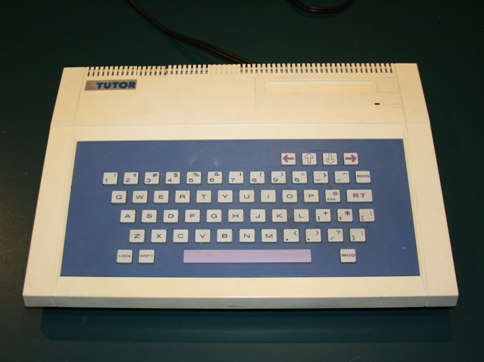




|
NAME |
Tutor / Pyuuta |
|
MANUFACTURER |
Tomy |
|
TYPE |
Home Computer |
|
ORIGIN |
Japan |
|
YEAR |
1983 |
|
END OF PRODUCTION |
about 1988 |
|
BUILT IN LANGUAGE |
GBasic + Tomy Basic on later machines |
|
KEYBOARD |
QWERTY, 56 rubber keys with a large pink spacebar |
|
CPU |
Texas-Instrument TMS 9995NL |
|
SPEED |
2.7 MHz |
|
COPROCESSOR |
Videochip : Texas-Instrument TMS 9918ANL |
|
RAM |
16 kb (up to 64 kb) |
|
VRAM |
16 KB |
|
ROM |
32 kb (including TOMY Basic, GBASIC, and graphic software) |
|
TEXT MODES |
32 x 24 (16 colors) |
|
GRAPHIC MODES |
256 x 192 in 16 colors, 4 unicolor sprites |
|
COLORS |
16 |
|
SOUND |
3 channels (2 music, 1 noise), 8 octaves |
|
SIZE / WEIGHT |
36 x 24 x 6 cm / 1,75 kg |
|
I/O PORTS |
Joystick port (9-pin DSUB, but not Atari compatible) |
|
OS |
TI's own system, but a p-code card could be added, which gave access to the UCSD p-system and a Pascal compiler. |
|
POWER SUPPLY |
Built-in AC power supply 14W |
|
PRICE |
$380 (USA, October 1983) |
|
Tomy Tutor
|
|
Tomy Tutor |
|
This computer, known under the name Pyuuta in Japan had no really success outside Japan. It was followed by the Pyuuta Mark 2 and a game console called Pyuuta Jr one year later. |